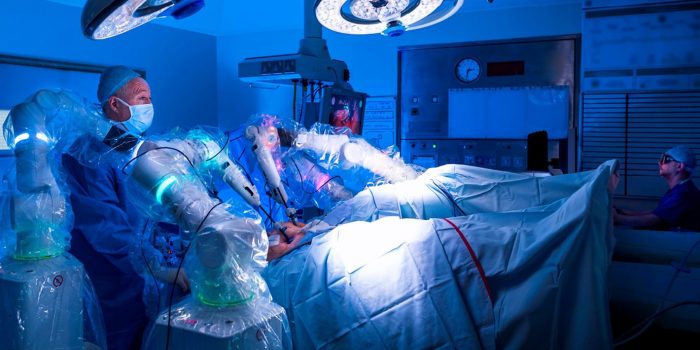In the rapidly evolving landscape of healthcare, robots are asserting their presence in operating rooms, achieving remarkable feats that were once thought impossible. A striking testament to this trend is the story of Glenn Deir, a cancer survivor from Canada, who credits a cutting-edge surgical robot with saving his life when human intervention seems futile.
Sixteen years ago, Deir faced a dire situation: an inoperable tumor stemming from the human papillomavirus threatened his life. Despite enduring arduous radiation treatments and advocating for HPV vaccination, his plight worsened as no doctor was willing to undertake the intricate surgery required. In a heartfelt op-ed for CBC, Deir shared his journey from despair to hope, spotlighting the crucial role that medical robotics played in his recovery.
Deir’s turning point arrived when a physician recommended seeking the expertise of a surgeon proficient in using the Da Vinci surgical robot, a state-of-the-art system designed for complex procedures. Though this meant traveling to another province and enduring costs, Deir grasped the lifeline. The surgery, which involved delicate manipulations of his tonsil, tongue, and throat, was conducted with the precision of Da Vinci. The robot’s assistance, however, did not diminish the complexity of the task.

The operation proved to be an intricate affair, lasting over 2½ hours. Deir’s prior radiation treatment had rendered his tissues stiff and unyielding, posing unforeseen challenges. The tumor, akin to a large cherry, and the necessary muscle rotations further complicated the procedure. Deir woke up post-surgery with a feeding tube and a neck incision reminiscent of the Frankenstein legend. Yet, despite the formidable hurdles, the surgical venture succeeded, giving Deir a second chance at life.
Deir expressed profound gratitude to the Da Vinci robot, acknowledging that without its involvement, his predicament would have been insurmountable. The alternative, as described by his surgeon, Dr. Corsten, involved an antiquated and invasive approach of splitting the jaw, an image too unsettling to contemplate.

Deir’s triumphant tale mirrors the broader advancements in medical robotics witnessed in recent years. From hastening cancer recovery to enabling remote surgeries and pioneering innovative laparoscopic techniques, robots are spearheading a revolution in surgical care. The remarkable case of Glenn Deir underscores that the future of medical procedures lies in the hands of robotic precision.
As robotics continue to carve a transformative path in healthcare, patients like Glenn Deir stand as living testaments to their potential. The once-distant dream of robot-assisted surgeries has become a tangible reality, restoring hope and vitality to individuals for whom traditional approaches fell short. In the annals of medical history, Deir’s narrative is an inspiring chapter that highlights the remarkable synergy between human expertise and robotic ingenuity.


